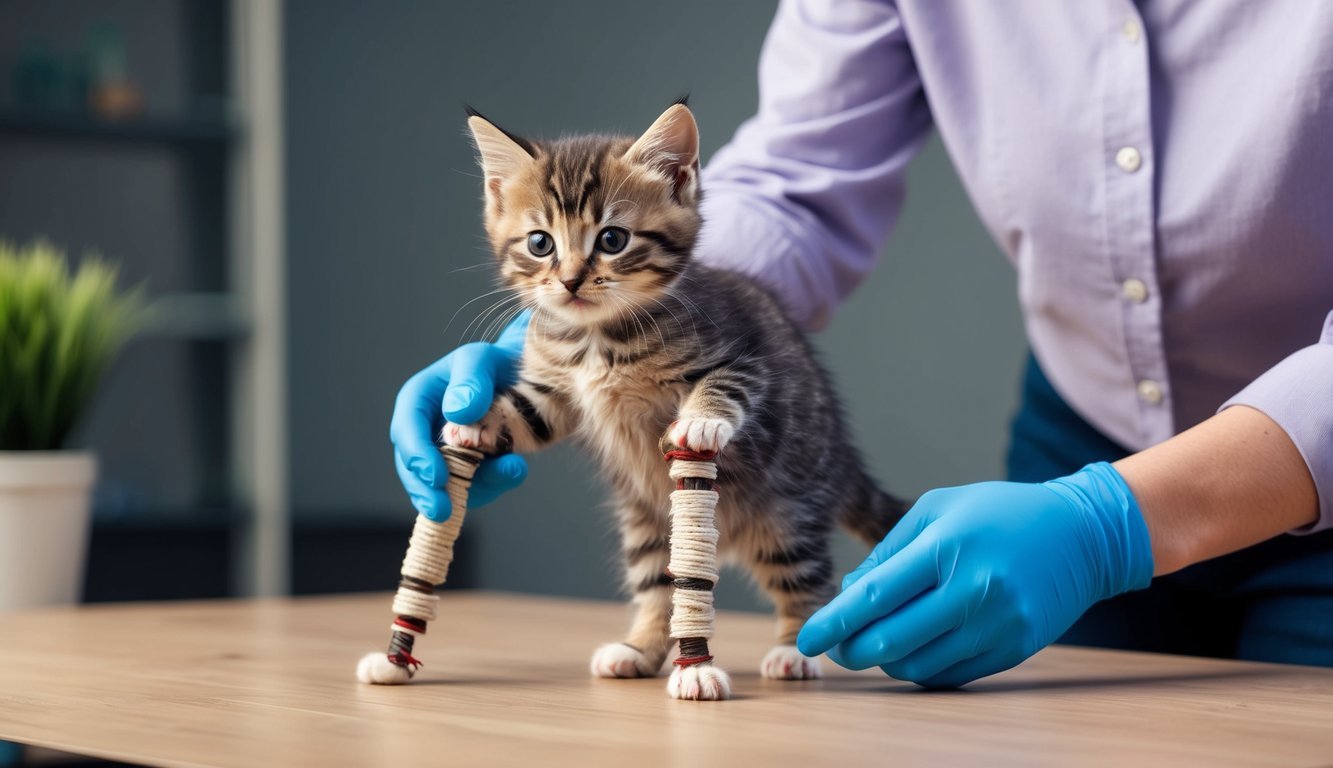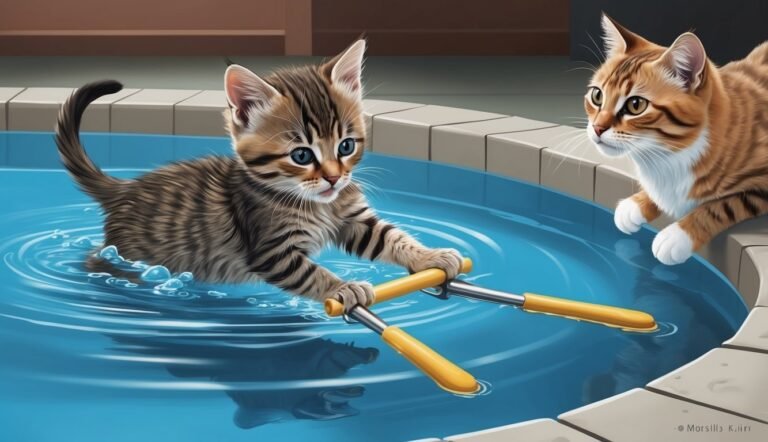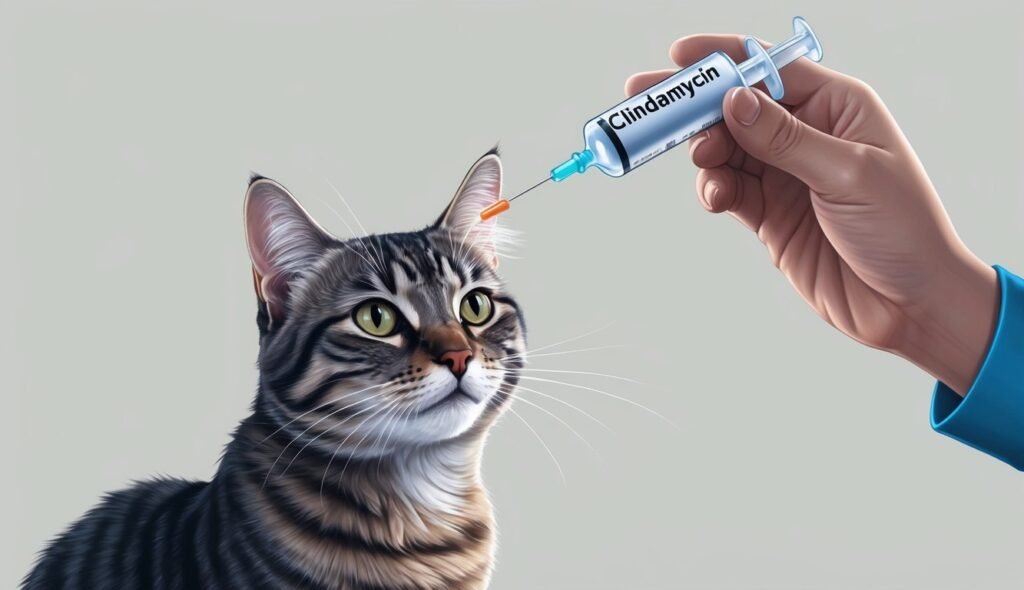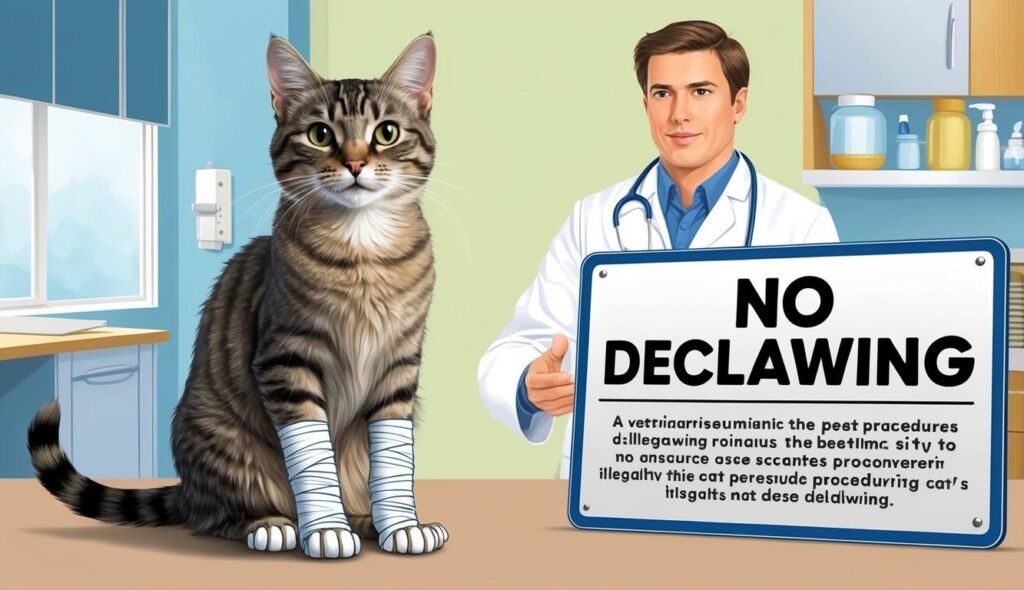When you think of kittens, you probably imagine playful little furballs bounding about without a care in the world.
However, some kittens face unique challenges that affect their ability to thrive.
Swimmer Syndrome is one such condition that can make it difficult for a kitten to stand and walk, but with the right care and support, they can overcome these obstacles.
Take Jitterbug, for example.
With the help of a dedicated foster mom and physical therapy, she learned to navigate her world despite the limitations imposed by her condition.
Her journey showcases how determination and love can lead to remarkable transformations.
Learning about stories like Jitterbug’s not only highlights the resilience of animals but also inspires you to consider how you can make a difference in the lives of those in need.
With proper understanding and intervention, kittens with Swimmer Syndrome can lead happy, fulfilling lives.
Understanding Swimmer Syndrome
Swimmer syndrome is a condition that primarily affects kittens, causing them to struggle with mobility, particularly in their hind legs.
Recognizing the symptoms and understanding the underlying causes is crucial for anyone caring for affected kittens.
Defining Swimmer Syndrome
Swimmer syndrome is a congenital condition seen in newborn kittens.
It’s characterized by flattened chests and an inability to move or stand normally due to the improper positioning of their legs.
Kittens typically show signs of this condition between 15 to 20 days after birth.
Symptoms can include an inability to walk or crawl and a distinctive appearance where their legs are splayed out to the sides.
This condition can severely impact their quality of life if not addressed early.
Causes of Swimmer Syndrome
The exact causes of swimmer syndrome are not fully understood, but several factors contribute to its development.
Genetic predispositions can play a role, as certain breeds may be more susceptible.
Environmental factors, such as litterbox positioning and the kitten’s living conditions, can also contribute.
For instance, if a kitten spends too much time on flat surfaces without proper support, they may develop this condition.
Other potential causes include malnutrition or inadequate vitamin and mineral intake during critical growth stages.
Early diagnosis and intervention are key to helping your kitten recover and thrive.
Identifying Swimmer Syndrome
Recognizing swimmer syndrome in kittens early can significantly impact their treatment and recovery.
You should be aware of the signs and understand the process for a proper diagnosis.
Signs of Swimmer Syndrome in Kittens
When you observe a newborn kitten, look for certain physical indicators that may signal swimmer syndrome.
Common signs include:
-
Abnormal Limb Positioning: The kitten might have its hind legs splayed out to the sides, resembling a frog.
-
Difficulty Standing or Walking: If a kitten struggles to stand or is unable to walk, this is a crucial sign.
-
Weak Muscles: You may notice reduced muscle tone, especially in the hind legs, impairing normal movement.
-
Inactivity: Affected kittens often appear lethargic and engage in less play or exploration.
These signs typically become evident between 15 to 20 days of age.
If you notice these symptoms, it’s essential to consult a veterinarian promptly.
The Process of Diagnosis
Diagnosing swimmer syndrome begins with a thorough examination by a vet.
They will assess the kitten’s physical condition and mobility.
Expect the following steps during the diagnosis:
-
Physical Examination: The vet will closely examine your kitten’s limbs and overall posture.
-
Observation of Movement: You may be asked to observe and report how the kitten moves, particularly its ability to walk and stand.
-
Medical History Review: It’s vital to provide details about the kitten’s birth and any other health issues.
-
Possible Imaging: In some cases, X-rays may be needed to rule out other conditions.
Being aware of these diagnostic steps can help you feel prepared when visiting the vet.
Early identification can lead to more effective treatment plans to support your kitten’s development.
Treatment and Management Strategies

Managing swimmer syndrome in kittens involves a combination of home interventions, professional care, and rehabilitation techniques.
Each approach is vital for helping your kitten regain mobility and improve their quality of life.
Interventions at Home
You can start with simple interventions at home.
Taping the kitten’s legs can help position them properly and provide support.
Use soft, flexible tape to avoid skin irritation.
Set up a safe space for your kitten to practice movement.
Soft bedding and non-slippery surfaces are important to help them gain traction.
You can encourage light movements by gently guiding their legs or using toys to entice them to reach.
Remember, consistency is key.
Daily sessions of 15 to 30 minutes help reinforce proper leg placement.
Monitor their progress closely and adapt your techniques based on what seems to help your kitten the most.
Physical Therapy and Rehabilitation
Physical therapy plays a crucial role in rehabilitation.
Treatments may include structured exercises tailored to strengthen your kitten’s legs.
You can also explore water therapy, as buoyancy can ease pressure on their limbs while promoting movement.
Incorporating traction exercises can further improve muscle development.
Securely place your kitten on a surface with grip while encouraging them to push against it.
This enhances their coordination and strength.
Consider using a gentle range of motion exercises.
Gently move your kitten’s legs in a controlled manner to increase flexibility and circulation.
Ideally, you should aim for two to three rehabilitation sessions per week to ensure they remain engaged and motivated.
Professional Veterinary Care
Regular veterinary visits are essential for diagnosing and managing swimmer syndrome effectively.
Your veterinarian can provide a treatment plan tailored specifically for your kitten’s needs.
They might recommend physical therapy specialists who are skilled in working with animals.
These professionals can introduce you to advanced techniques and exercises to aid in your kitten’s recovery.
Additionally, your vet may suggest tools such as slings or harnesses to assist your kitten in getting around during recovery.
Continuous monitoring of your kitten’s progress is necessary to make necessary adjustments to their rehabilitation program.
Always follow your veterinarian’s guidance to ensure the best outcomes.
Real-life Challenges and Recovery
When dealing with swimmer syndrome, kittens face various challenges that affect their mobility and overall well-being.
Understanding these obstacles and the potential for recovery can provide hope and guidance for caregivers.
Overcoming Daily Challenges
Kittens with swimmer syndrome struggle with basic movements due to their limbs being unable to function properly.
This limitation can make tasks like walking, grooming, and using the litter box particularly difficult.
You may need to assist them with mobility.
Providing a safe environment is essential.
Create spaces where they can practice standing and walking without the risk of injury.
Regular physical therapy, often involving gentle exercises, can help them strengthen their muscles and improve coordination.
Using supportive devices, like harnesses, can also aid in mobility.
Facilitating social interactions with other pets can motivate a kitten to engage and play, promoting physical activity.
Remember, patience is key.
Each small victory adds up, so celebrate those little milestones together!
Success Stories of Recovery
Many kittens with swimmer syndrome have overcome their initial challenges and thrive in loving homes.
Success often involves a dedicated rehabilitation plan tailored to their individual needs.
Several inspiring examples highlight how consistent care makes a difference.
For instance, some kittens have learned to walk and run with the help of specific therapies. Jitterbug is a notable case where a newly rescued kitten overcame severe mobility issues through love, support, and water therapy.
Involving veterinary professionals can also increase recovery chances.
They can guide proper nutrition and physical therapy, contributing to overall improvement.
Such stories affirm that with commitment and encouragement, significant progress is achievable for these kittens.
Support and Resources
Finding the right support and resources can make a significant difference for you and your kitten facing Swimmer Syndrome.
Various organizations and online communities provide practical help and emotional guidance.
Shelters and Rescues
Local shelters and rescues are invaluable when caring for a kitten with Swimmer Syndrome.
They often have resources, such as experienced staff who can guide you on specific treatments and rehabilitation exercises.
You might find that some shelters also have partnerships with veterinarians specializing in physical therapy for pets.
Be sure to ask about any foster programs, as they can offer you additional support and supplies, including specialized equipment to assist with your kitten’s mobility.
Listing key shelters in your area can help streamline your search:
- Local Animal Shelter: Check your municipal shelter or humane society.
- Nonprofit Rescues: Organizations like the ASPCA or Best Friends Animal Society may provide additional resources or support networks.
Online Communities and Support
Online communities can be a great source of encouragement and advice.
Websites like Facebook and Reddit host groups dedicated to pet care, where you can connect with other pet owners.
These platforms allow you to share your experiences, ask questions, and even find tips on physical therapy techniques and equipment.
Look for forums focusing specifically on kittens or special needs pets.
You might also discover various educational resources, such as webinars or articles offering insights into Swimmer Syndrome.
You can utilize hashtags like #SwimmerSyndrome on social media to help you find pertinent discussions and support networks.
Connecting with others who understand your journey creates a sense of community, making the challenges of caring for your kitten feel a bit lighter.



